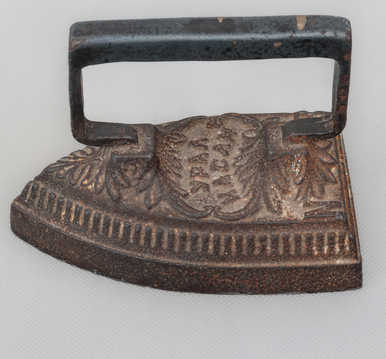A carrying pole was one of the most important agricultural tools. It was a rather convenient device for carrying buckets, pails, and baskets. The buckets that women put on the carrying pole seemed less heavy.
It was also of fundamental importance that the water remained clean when carried in this way. The fact is that dust, as well as flower heads and grass seeds, did not get into the buckets that were carried high above the ground. In winter, the buckets did not touch the snowdrifts.
Artisans traditionally made carrying poles from linden, aspen, and willow wood, which was light, flexible and resilient. Other types of wood included birch, hazel, maple, beech, less often — pine and spruce wood. In many villages, carrying poles were cut from a wide and strong straight board. In this case, it tapered to the ends, and a notch for the neck or shoulder was cut out in the middle.
A tree that was 5 to 7 cm in cross section and 190 to 210 cm long was selected as a blank for the carrying pole. An artisan used an ax or planer to make the finished product. To prevent the carrying pole from cracking, craftsmen sometimes coated it with tin.
Buckets were fixed on long hooks that descended from the ends of the carrying pole. These hooks were fastened along the edges to metal plates with screws or nails. The carrying pole was painted and decorated with carvings, which gave it an elegant and festive look.
Old-timers say these household items served in some cases for 50 years or more. At home, the carrying pole was stored vertically in the corner of the corridor; it could also be laid on two nails or pegs specially driven into the wall.
There are many Russian riddles and proverbs about carrying poles: “Two brothers want to fight, but their arms are short”, “Two are swimming, and the third one is watching”, “Between the two seas, across the meat mountains, there is a curved bridge”, “ A woman’s mind is like a woman’s carrying pole: curved, crooked and has two ends”, “Craft is not a carrying pole, it is not hard”, “Dust raises like a pillar, smoke — like a carrying pole: either from sorrow, or from dancing.”
It was also of fundamental importance that the water remained clean when carried in this way. The fact is that dust, as well as flower heads and grass seeds, did not get into the buckets that were carried high above the ground. In winter, the buckets did not touch the snowdrifts.
Artisans traditionally made carrying poles from linden, aspen, and willow wood, which was light, flexible and resilient. Other types of wood included birch, hazel, maple, beech, less often — pine and spruce wood. In many villages, carrying poles were cut from a wide and strong straight board. In this case, it tapered to the ends, and a notch for the neck or shoulder was cut out in the middle.
A tree that was 5 to 7 cm in cross section and 190 to 210 cm long was selected as a blank for the carrying pole. An artisan used an ax or planer to make the finished product. To prevent the carrying pole from cracking, craftsmen sometimes coated it with tin.
Buckets were fixed on long hooks that descended from the ends of the carrying pole. These hooks were fastened along the edges to metal plates with screws or nails. The carrying pole was painted and decorated with carvings, which gave it an elegant and festive look.
Old-timers say these household items served in some cases for 50 years or more. At home, the carrying pole was stored vertically in the corner of the corridor; it could also be laid on two nails or pegs specially driven into the wall.
There are many Russian riddles and proverbs about carrying poles: “Two brothers want to fight, but their arms are short”, “Two are swimming, and the third one is watching”, “Between the two seas, across the meat mountains, there is a curved bridge”, “ A woman’s mind is like a woman’s carrying pole: curved, crooked and has two ends”, “Craft is not a carrying pole, it is not hard”, “Dust raises like a pillar, smoke — like a carrying pole: either from sorrow, or from dancing.”



